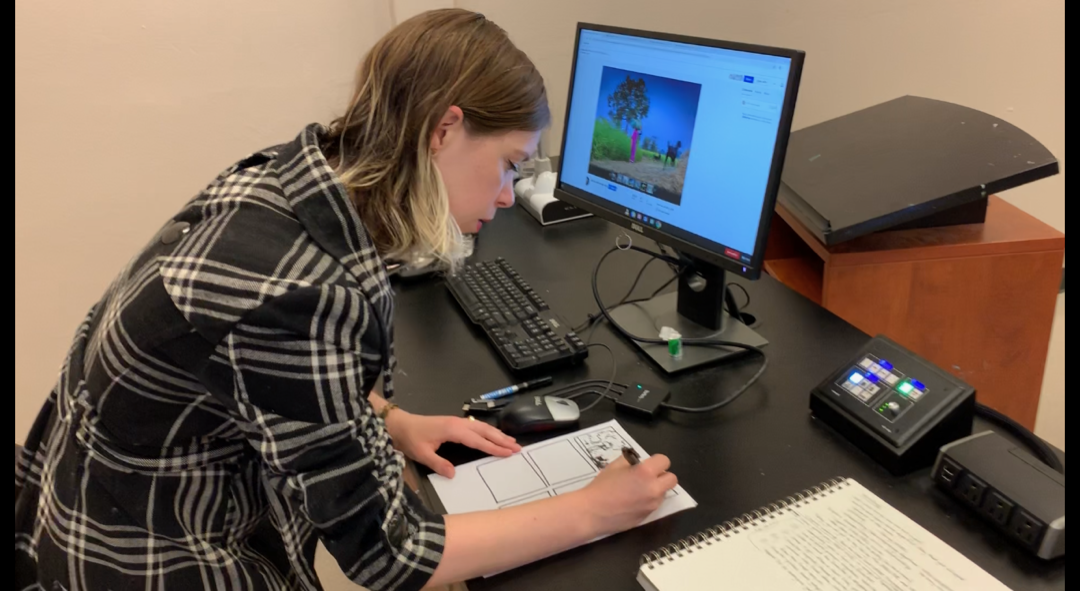Disney storyboard artist Natalie Nourigat spoke to Lipscomb students on Friday night and gave an inside look at being an artist in the animation industry.
Nourigat has illustrated a graphic novel, worked on a Deadpool comic and published a book about pursuing animation in Los Angeles, but she actually never went to school for art. With a business major, she started doing freelance work, taking art classes and building up her portfolio through an internship.
Nourigat now works on Disney feature films and currently, her only current credit is Ralph Breaks the Internet: Wreck it Ralph 2. Due to the long process of creating animation films, she said has to keep all current projects secret.
“We work on things that are in development, so we might be working on movies that aren’t going to come out for three to five years — we don’t know,” Nourigat said. “It’s fun, it’s like animation CIA, we can’t talk about it.”
Some of Nourigat’s storyboards from the Wreck it Ralph sequel were put on the screen for the audience to see the difference from a preliminary sketch to a more in depth scene. She shared that it takes her a day-and-a-half to do a rough sketch of one scene, and that Disney aims to storyboard the whole movie in three months.
“On average, Disney movies are storyboarded start to finish nine times,” Nourigat said. “It gets taken apart and put back together many times to try and make it as strong as possible.”
Because the crowd was predominantly animation students looking to pursue storyboarding, Nourigat gave tips on how to create a portfolio of storyboards.
“If you’re sitting in a park and you’re drawing people, I would love to see that in your story portfolio,” Nourigat said. “What are the human dramas that you observe? What are the thing that you think are funny or charming?”
She also gave an example pitch for students to see what it’s like to showcase a storyboard to directors. Sophomore animation student Hayley Evans said she found Nourigat’s tips on pitching stories helpful because of her shy personality.
“I really appreciate how she talked through the pitching process and that you don’t have to be extroverted to be a storyboard artist and pitch,” Evans said. “I’m a very introverted person and being in that environment I’d be very stressed.”
Audrey Wagnon, a junior animation student, said she liked how Nourigat was currently working at Disney, unlike most of the department’s guest speakers who animated during the 80s and 90s.
“One thing that’s different about her is that she’s currently working at Disney, and I mean, she is just more current,” Wagnon said. “It’s exciting to see a female artist, and she’s, like, closer to our age.”
As a last piece of advice, Nourigat said that the thing potential employers want to see most is art that’s unique and different from what is already out there. She urged students to draw what they imagine and animate reality in a way that shows their vision.
“You don’t have to draw exactly what’s in front of you,” Nourigat said. “The point isn’t to be a camera, right? The point is to show the way that you see it or what it inspires for you.”

